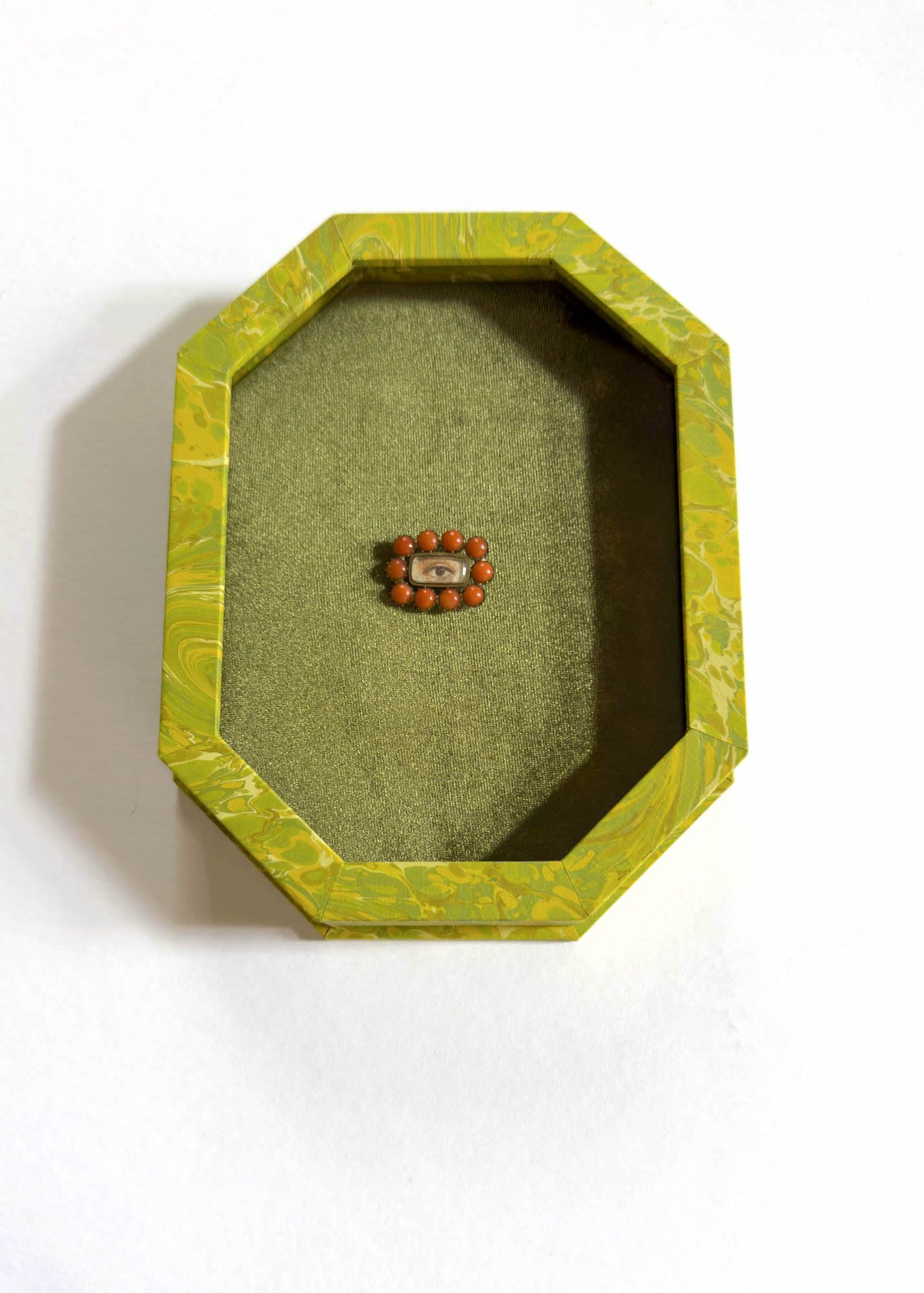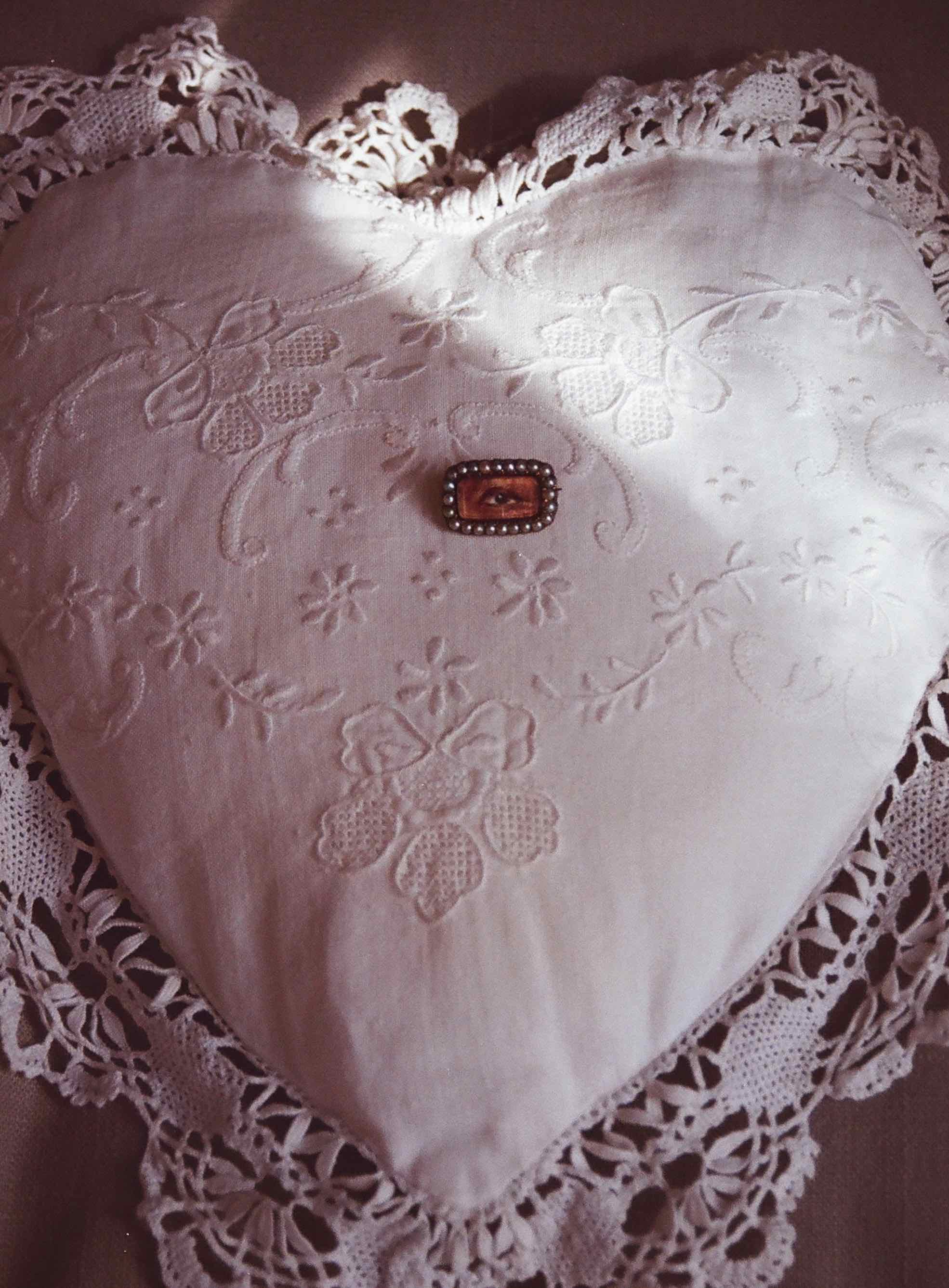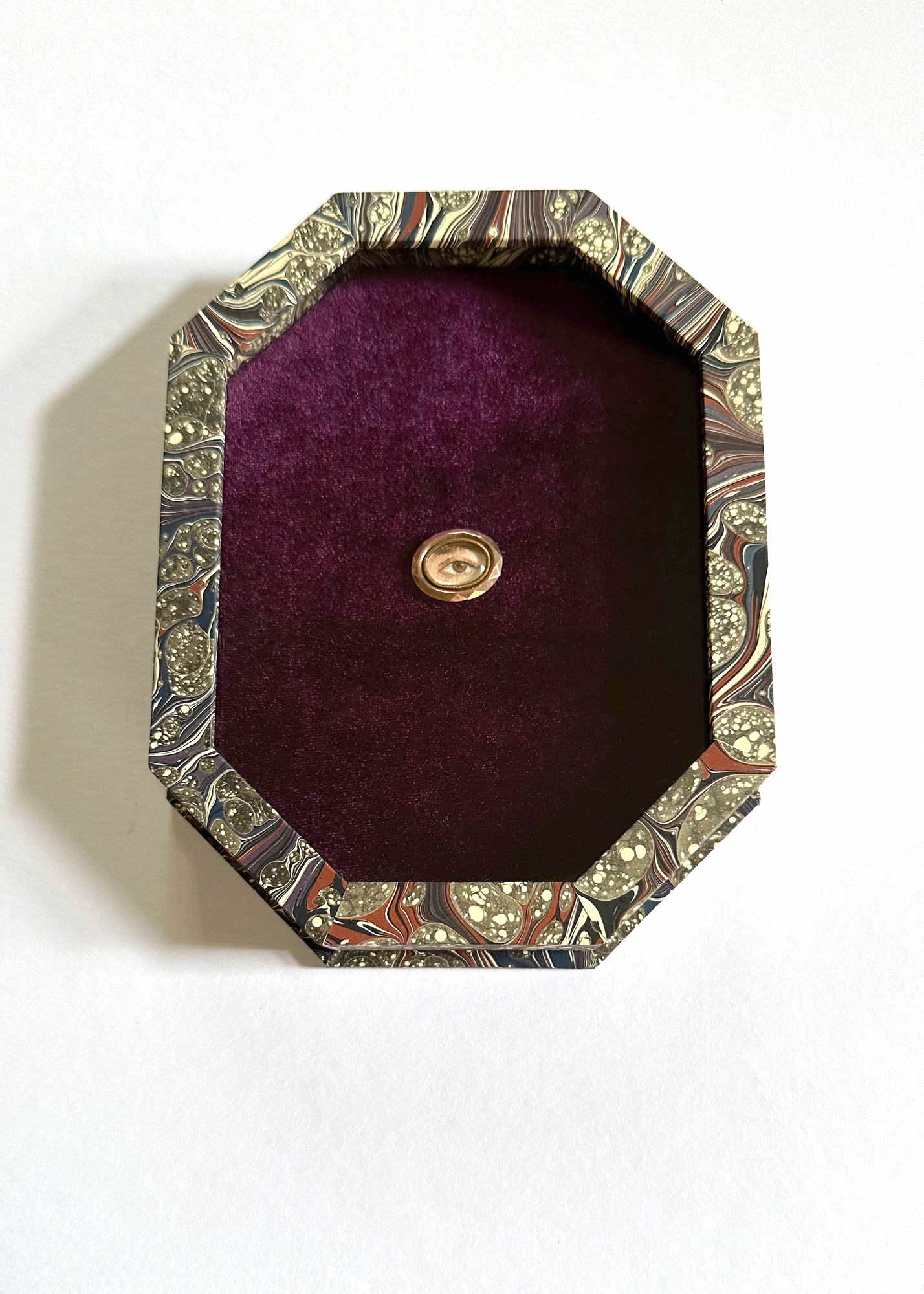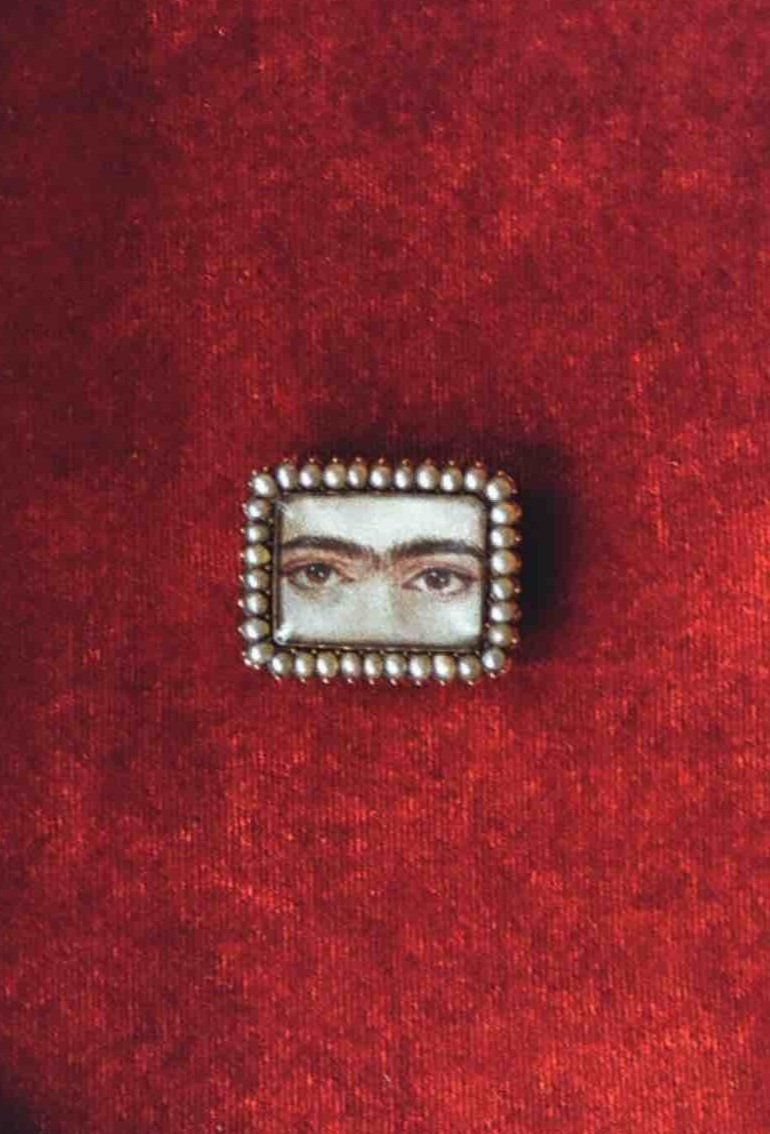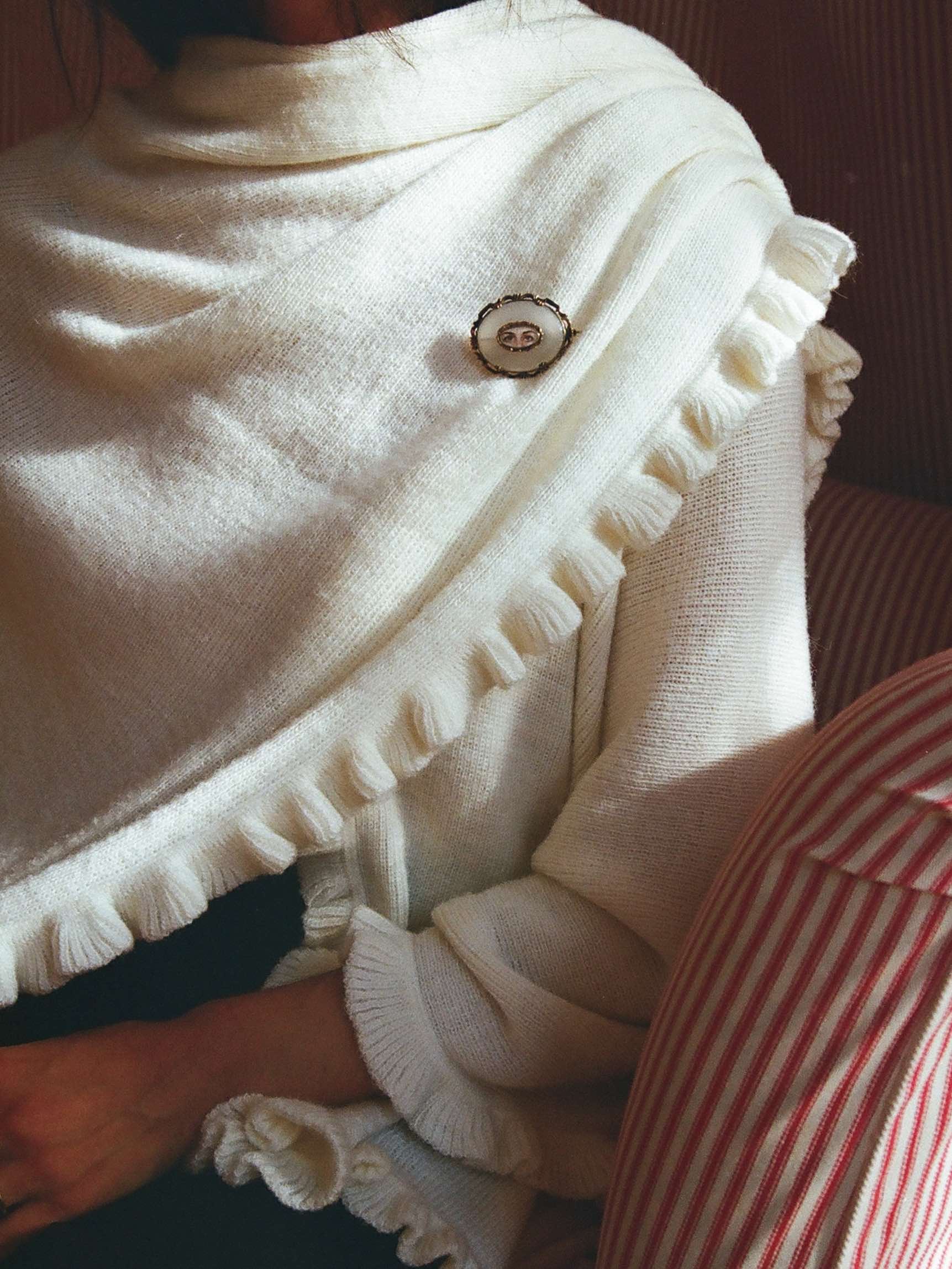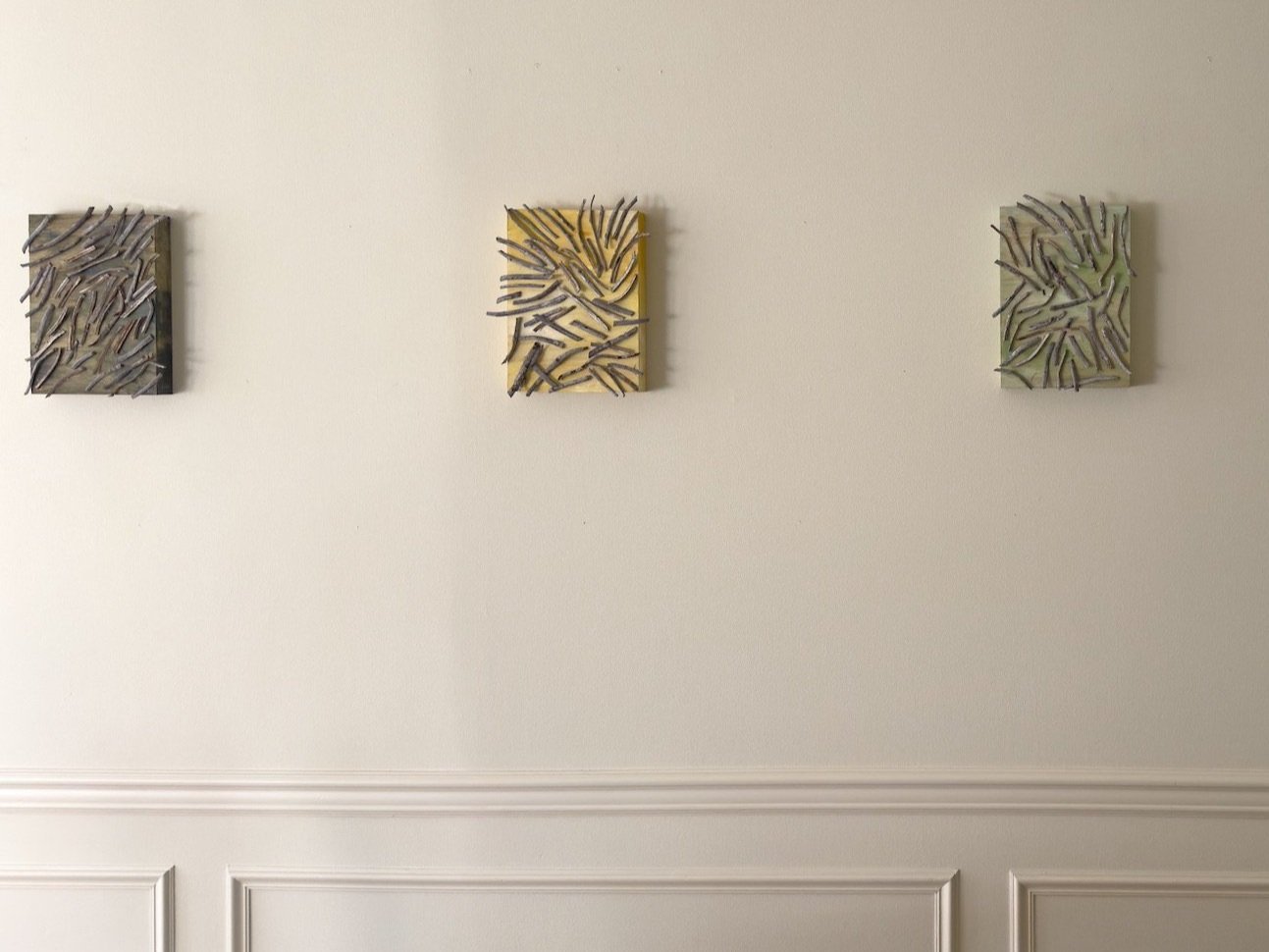PERIOD PORTRAITS INTERVIEW
MINIATURES AS INSPIRATION: The Artist’s Eye
For my first foray into Instagram Live, I sat down with Nick Cox, England’s most charming art dealer and the founder of Period Portraits to discuss The Artist’s Eye and the history of Lover’s Eye jewelry.
Highlights from our conversation and a link to watch the interview below.
NC: I just love that you're managing to wear miniatures and it's in such a spectacular fashion.
Yesterday I was chatting with Emma from the Limner Company and we were putting things in context of miniatures and we were talking about King George when he married Queen Charlotte and he gifted her a portrait miniature and that started a trend.
And I think it was around 1785 that Prince George was courting Maria Anne Fitzherbert and actually gifted her a love as eye and that starts to hold new craze. And it didn't last very long did it. I think it's quite a short-lived thing.
AKdeJ: Yes. I feel like I've read before that estimates of how many original eyes from that period are still in existence hover around a thousand. So it's actually a very small output of original pieces from that late 18th century moment.
“I love the idea of carrying someone with you
as a person who really loves that sentimental layer.
It's just such a fascinatingly intimate version
of a medium that's already very personal.”
NC: He was trying everything and he center her a letter with his lover’s eye and it fell out. They obviously got married and then she had her eye painted. He put that in a locket held it close. They are quite bonkers items in that they are sort of like part portrait, part jewelry. But that's their appeal, isn’t it?
AKdeJ: I think it is. And I feel like the idea of a functional artwork is really a fascinating one. And I love the idea of carrying someone with you as a person who really loves that sentimental layer.
It's just such a fascinatingly intimate version of a medium that's already very personal. Portraiture is already incredibly intimate, and how you present yourself to the world when you have your whole face or your whole body and all of your clothes and everything to signal who you are. The function of just an eye alone is incredibly different in intention and reception. And I think that distinction is super fascinating.
“The piece just knocked my socks off.
It was so strange to have such a true likeness
of just an eye.”
NC: And I love the connection with what you do in terms of your business and interior as you put art at the centre of things. Well what you're doing is you're putting art at the centre of your personal space which is where it really begins, isn't it?
How did the project come to start?
AKdeJ: I first came across Lover’s Eyes many years ago visiting the V&A and just was so fascinated by them. And just thought they were such incredibly beautiful and mysterious manifestations of sentimentality and art and the layers of mystery that come from not knowing who the person is. And not knowing who the artist is either.
You're fascinated but you can't possibly know anymore than what you have at hand. And so I think that's really interesting and that kind of stuck with me as just something I really was very captivated by. And then I found Irene [Owens]'s work and I approached her to ask if she would do a portrait and she said yes and I had her do my husband’s eye. I took a photo with my iPhone camera and I didn't really think too much of it.
And she sent it back to me and the piece just knocked my socks off. It was so strange to have such a true likeness of just an eye.
I was so astounded by her technique and skill that last year when Françoise Gilot died, all of the obituaries hailed her death as the death of Picasso's muse. That was just the way that her obituary had been prepared.
And there was a lot of pushback from people saying like, you know, she was an artist. What about her life? She had 60+ more years of her life and she was very actively painting. And, and that was a side note in the memory of who she was. And it really got me thinking about the female perspective.
I started to read her memoir, Life with Picasso. And she had a fabulous quote in an interview she did with Thessaly La Force, who used to be the editor for T Magazine, where Thessaly was like, Your life is so fascinating. This memoir of yours is being republished. But, what about your life? And [Gilot] said [something] like, Well, I'm the eye that seeing, I'm telling you what I saw. I'm not interested in what's about me. I'm thinking about what it is I’m seeing.
And it really made me think about the female gaze. And with this project I was essentially really wanting that gaze to become something beautiful that people could connect with.
And so I went back to Irene, and I asked her if she would paint the eyes of women artists from history.
“I was really wanting
the female gaze
to become something beautiful
that people could connect with.”
NC: And what I love is, is that basically, you know, we talked before, didn't we at the beginning about how often the sitter and the artist were unknown. And they're heavy-lidded, love-struck eyes. But you've taken that convention. You completely turned it on its head. And it's the, you know, it's the gaze of the powerful female artist. It's who we know. And, you know, it's a great thing.
AKdeJ: Yeah. It's a question of what did they see?
When I was studying art history, one of the most important and difficult questions for me to answer was what's not there?
NC: And you’re looking at the gaps and filling in the gap with these artworks. And it’s an ongoing project, isn’t it? This is what I love about it. It's not specific. People can add to it, they can commission. So tell us a little bit about that.
AKdeJ: Yes, Irene and I are collaborating still. And I chose these eight, the original collection was of eight women artists from history. And it was much more focused on like who's been over shadowed by a male counterpart. How can we change the conversation? How can we highlight their own role as an artist?
But my hope is that we'll continue to expand on these women, the female gaze going out into the world for people to share and wear and talk about.
I'm interested in people asking the question, Who would you want out there looking at the world with you? [shaping the history of today].
Thinking about how artists see things so differently, so alchemistically. Their ability to change reality and our understanding of what exists is so powerful.
*Excerpts from our interview have been condensed and edited for clarity.
Suggested further reading:
Life With Picasso by Francoise Gilot
Francoise Gilot's candid memoir remains the most revealing portrait of Picasso written, and gives fascinating insight into the intense and creative life shared by two modern artists. Fran?oise Gilot was in her early twenties when she met the sixty-one-year-old Pablo Picasso in 1943. Brought up in a well-to-do upper-middle-class family, who had sent her to Cambridge and the Sorbonne and hoped that she would go into law, the young woman defied their wishes and set her sights on being an artist. Her introduction to Picasso led to a friendship, a love affair, and a relationship of ten years, during which Gilot gave birth to Picasso's two children, Paloma and Claude. Gilot was one of Picasso's muses; she was also very much her own woman, determined to make herself into the remarkable painter she did indeed become. Life with Picasso, written with Carlton Lake and published in 1961, is about Picasso the artist and Picasso the man. We hear him talking about painting and sculpture, his life, his career, as well as other artists, both contemporaries and old masters. We glimpse Picasso in his many and volatile moods, dismissing his work, exultant over his work, entertaining his various superstitions, being an anxious father. But Life with Picasso is not only a portrait of a great artist at the height of his fame; it is also a picture of a talented young woman of exacting intelligence at the outset of her own notable career.
Treasuring the Gaze: Intimate Vision in Late Eighteenth-Century Eye Miniatures by Hanneke Grootenboer, University of Chicago Press
A COLLECTION
of wearable miniature paintings of women artists’s eyes painted by Irene Owens to spark conversation about the female gaze and art history — how, and for whom, it is recorded.
A Point of View
Meet Audra, the founder of Art/artefact, an art-led interior design practice dedicated to placing a personal collection at the heart of every project.
Inspired by creative output across disciplines and categories, Audra trains her eye on the exceptional, weaving connections between the past, present, and future of great design.


